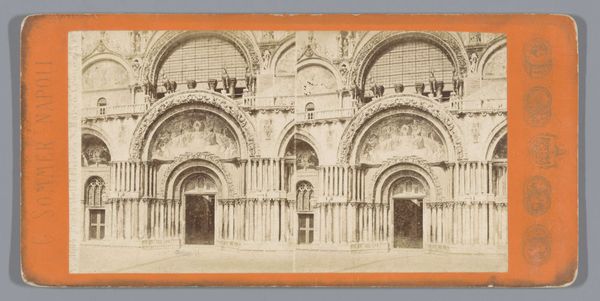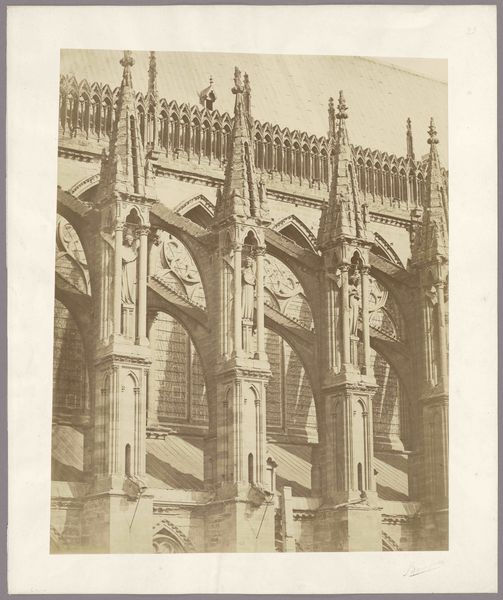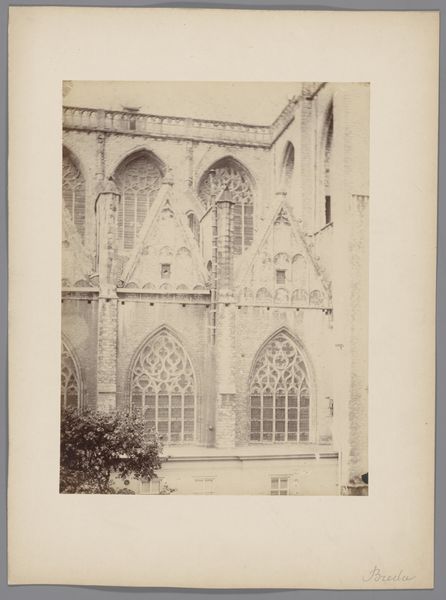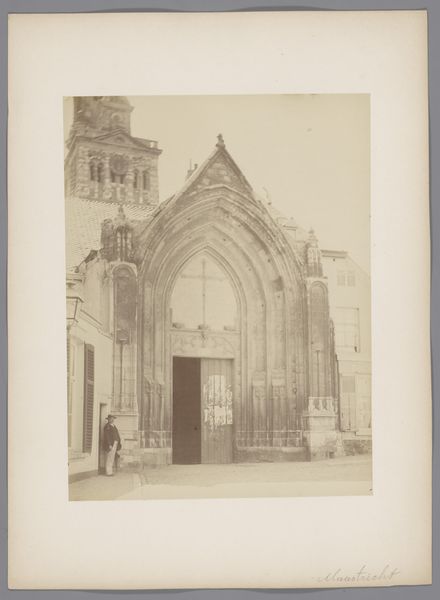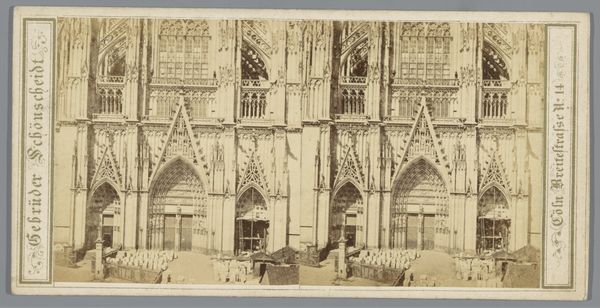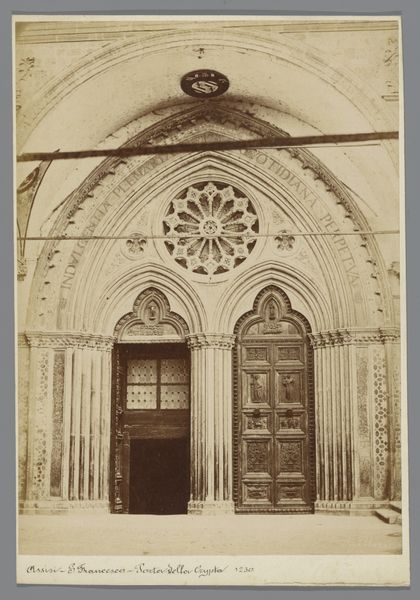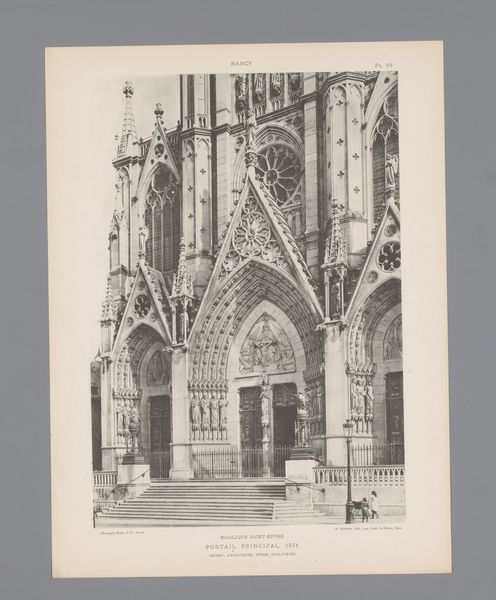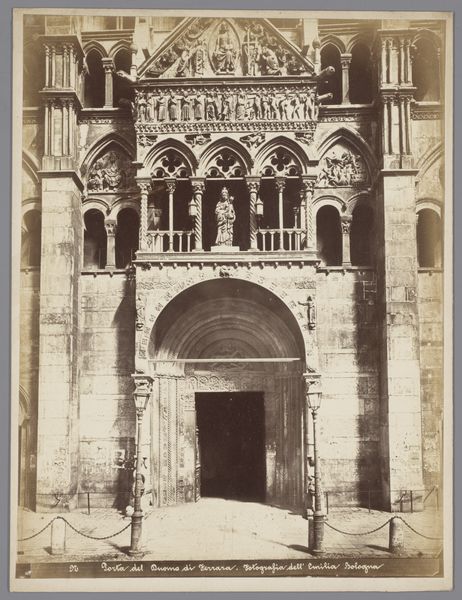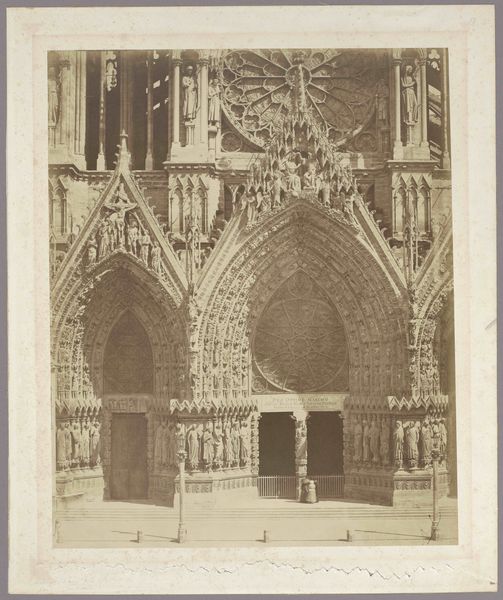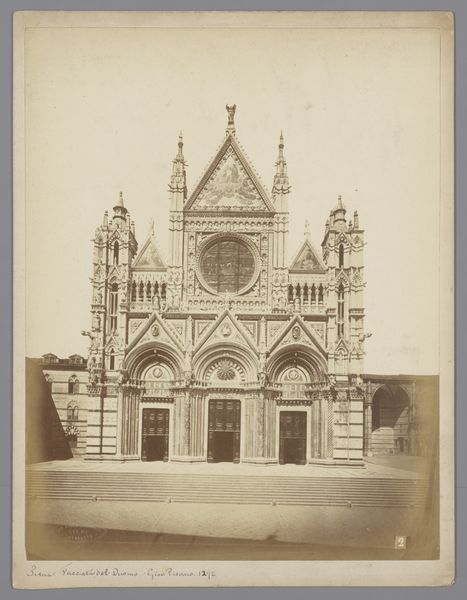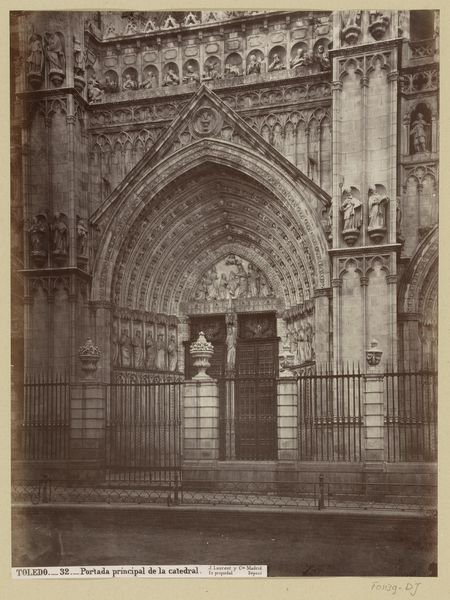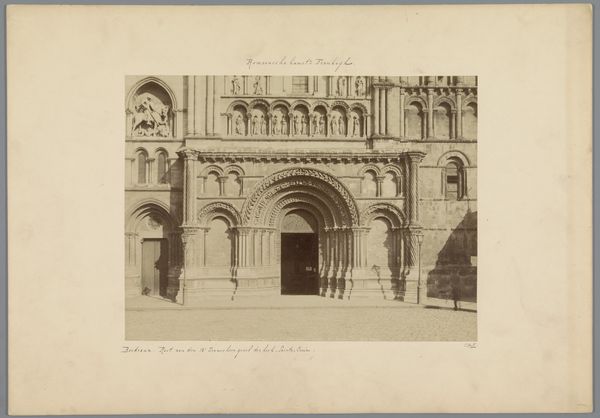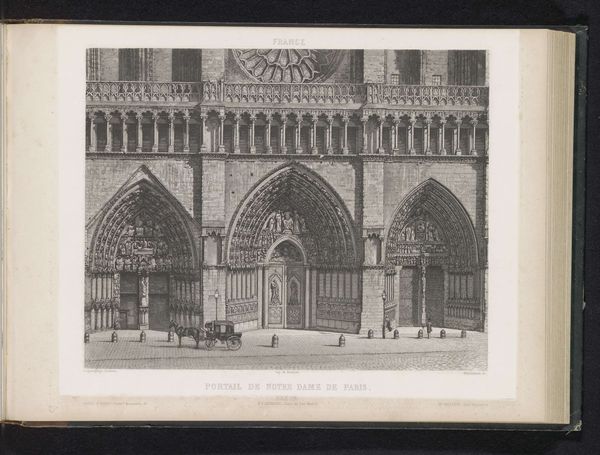
photography, architecture
#
landscape
#
photography
#
19th century
#
neutral brown palette
#
cityscape
#
architecture
#
realism
Dimensions: height 487 mm, width 646 mm, height 528 mm, width 700 mm
Copyright: Rijks Museum: Open Domain
Curator: Looking at this photograph, it feels like stepping back in time, doesn't it? The light, that particular shade of sepia, evokes a sense of timelessness. Editor: It's incredibly somber. The Bisson Frères, known for their meticulous architectural photographs, captured the facade of Notre-Dame between 1860 and 1865, a period rife with socio-political tension and anxiety. You feel the weight of history, not just the cathedral's. Curator: Exactly! The stone seems to absorb the light, but not in a gloomy way—more like a quiet, contemplative absorption. I wonder what it felt like to stand there, facing that immensity back then, without the digital distractions we have now. You’d be utterly present. Editor: Consider the cathedral's role: for centuries, the epicentre of religious and state power. The image becomes an allegory for structural power, quite literally. Note how the perspective diminishes the surrounding landscape and civilians on view to amplify the monolithic structure of the cathedral. Who did Notre Dame really represent at that time? Curator: It makes you ponder faith, doubt, humanity’s aspirations… It’s more than just documentation, right? It's an experience. The neutral brown palette almost feels like a blank canvas for your own projections. And the detail! You could lose yourself in the intricate carvings. Editor: Absolutely, it invites a certain reflection, and demands, I think, that we interrogate that very impulse to aestheticize institutions of power, to unpack how its symbolism has both oppressed and inspired, often simultaneously. Curator: It’s haunting in a way. There's something both permanent and fragile about this capture. Thinking about what Notre Dame has endured in the centuries after this photograph makes it even more poignant. Editor: I agree. There’s a premonition there, and maybe the value lies in that ability of art to be both a product of its time, and, through enduring questions of faith, power, and representation, ahead of it.
Comments
No comments
Be the first to comment and join the conversation on the ultimate creative platform.
